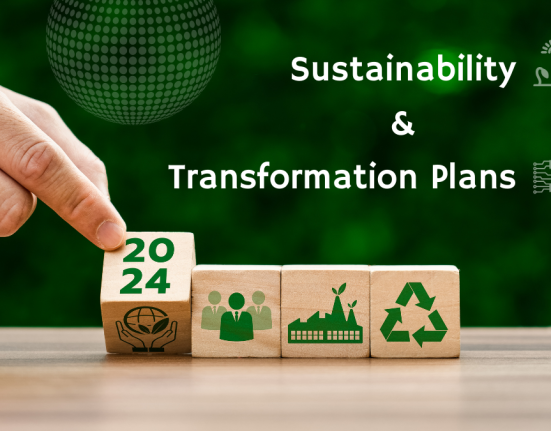The agricultural landscape has undergone a remarkable transformation over the centuries. From the era of manual labor and rudimentary tools, we now find ourselves in the midst of an agribusiness revolution that’s reshaping the way we cultivate crops and raise livestock. This blog post delves into the future of farming, highlighting the pivotal role agribusiness plays in this paradigm shift.
Humanity’s relationship with agriculture dates back millennia. Once characterized by subsistence farming, societies have progressively embraced innovation, leading to increased crop yields and food security.
Agribusiness emerged as a natural evolution of traditional farming. It intertwines modern business practices with agricultural production, aiming not only for sustenance but also for profitability and efficiency.
The convergence of technology and agriculture is ushering in unprecedented possibilities. Advancements like precision farming, vertical farming, robotics, data analytics, biotechnology, and sustainable practices are redefining the agribusiness landscape.
Precision Farming: A New Dawn
Precision farming represents a technological leap that optimizes every aspect of farming operations.
Definition and Principles
Precision farming leverages cutting-edge technologies, including satellite imagery, GPS, and sensors, to manage crop inputs, irrigation, and other practices precisely. It’s a data-driven approach to farming.
Benefits of Precision Farming
- Enhanced crop yield and quality
- Reduced resource wastage
- Efficient use of fertilizers and pesticides
- Site-specific management
- Timely decision-making
Examples of Precision Farming Technologies
- GPS-Guided Machinery: Tractors and harvesters equipped with GPS technology follow predetermined routes with accuracy.
- Remote Sensing: Satellites and drones capture real-time data on crop health and growth.
- Variable Rate Technology: Adjusting input application based on soil variability.
Vertical Farming: Growing Upward
Vertical farming is changing the very dynamics of how we visualize farming spaces.
Exploring Vertical Farming Concepts
Vertical farming entails cultivating crops in stacked layers or vertically inclined surfaces. It’s a space-efficient solution to traditional horizontal farming.
Advantages of Vertical Farming
- Year-round cultivation
- Minimal land usage
- Conserved water resources
- Protection from weather fluctuations
- Reduced transportation costs
Innovative Vertical Farming Systems
- Hydroponics: Growing plants in nutrient-rich water, without soil.
- Aeroponics: Plants suspended in a misty environment with nutrients delivered through the air.
- Aquaponics: Combining aquaculture and hydroponics for a symbiotic ecosystem.
Smart Automation: Robots on the Farm
Agricultural robotics is not science fiction; it’s a reality transforming farm operations.
The Role of Robotics in Agriculture
Agricultural robots perform tasks ranging from planting and harvesting to monitoring crop health, all with precision and efficiency.
Types of Agricultural Robots
- Harvesting Robots: Picking fruits with minimal damage.
- Weeding Robots: Identifying and removing weeds using AI.
- Drone Surveillance: Monitoring crop conditions from above.
Transformative Effects of Farm Automation
- Reduced labor costs
- Increased productivity
- 24/7 monitoring
- Data-driven insights
- Improved crop quality
Data-Driven Decisions: The Power of Analytics
Data has become the lifeblood of modern agriculture, powering informed decisions.
Harnessing Big Data in Agriculture
Farmers collect vast amounts of data on soil quality, weather patterns, and crop growth. Analyzing this data reveals actionable insights.
Applying Analytics for Yield Optimization
- Predictive modeling for crop yield
- Disease and pest outbreak forecasts
- Optimal planting and harvesting times
Biotechnology and Beyond
Biotechnology is enhancing crop resilience, yield, and nutritional value.
Biotechnology’s Impact on Farming
Biotechnology involves manipulating organisms’ genetic material to achieve desired traits. In agriculture, it’s used to create genetically modified organisms (GMOs).
Genetically Modified Organisms (GMOs) Explained
GMOs possess altered genetic makeup for traits like pest resistance, longer shelf life, or improved nutritional content.
Ethical Considerations and Future Prospects
GMOs raise concerns about environmental impact and food safety. Striking a balance between innovation and ethics is crucial.
Sustainable Practices: Balancing Nature and Technology
Agribusiness bears the responsibility of integrating technological advancements with sustainable practices.
The Need for Sustainable Agriculture
Balancing increased food demand with environmental preservation requires sustainable approaches.
Agribusiness’ Role in Environmental Stewardship
Implementing eco-friendly techniques like organic farming, crop rotation, and reduced chemical usage.
Implementing Eco-Friendly Farming Techniques
- Cover Crops: Preventing soil erosion and enhancing fertility.
- Precision Irrigation: Minimizing water wastage through targeted irrigation.
- Integrated Pest Management: Controlling pests with natural predators.
Conclusion
In the grand tapestry of human progress, the evolution of agriculture stands as a testament to our ability to innovate and adapt. The agribusiness revolution is not just a fleeting trend; it’s a transformation that’s here to stay. From precision farming that optimizes every square inch of arable land to vertical farming that defies conventional spatial limitations, and from the whirr of agricultural robots to the sophisticated dance of data analytics, the future of farming has never been more promising.








